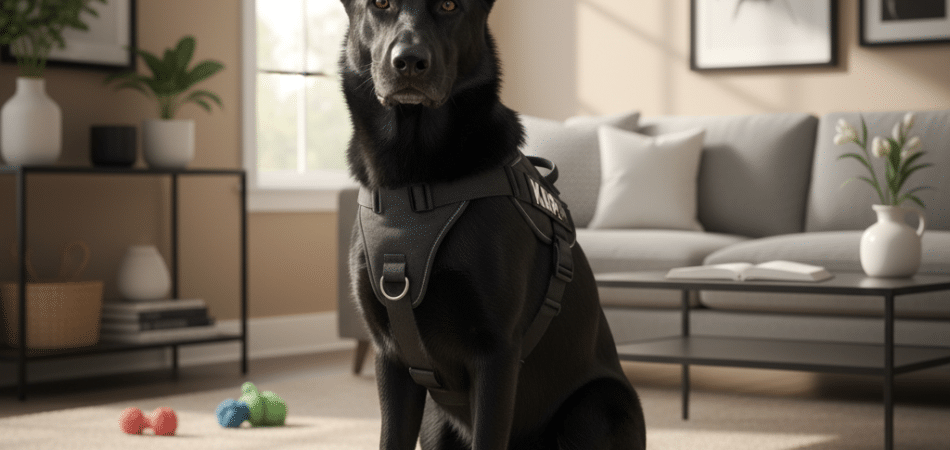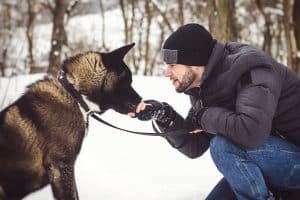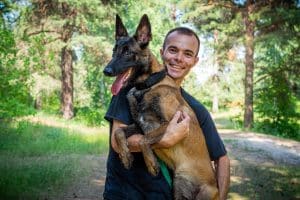






If there’s one truth that holds up when everything else feels like chaos, it’s this:
Your environment reflects your identity. And nowhere does that truth hit harder than inside your home.
If you want to live in a safe, calm, and grounded space, then everything and everyone inside that space needs to operate from that same frequency—your energy, your leadership, and your belief system.
Which brings us here.
Introducing a protection dog to your other pets.
You’re not adding a new friend to the pack. You’re integrating a new force. A protector. An animal trained to stay alert, read the room, assess and respond to threats—and stay locked in when everyone else relaxes or is asleep at the wheel.
And your existing pets? They weren’t built for that job. They don’t speak the same language. Neither do they operate with the same priorities.
So you’re introducing a completely different mindset into the home. One that thrives on structure, feeds off clarity, and only functions under solid, consistent leadership—yours.
And as much as we (protection dog trainers) work to shape these dogs with precision-level obedience and socialization…
A smooth introduction doesn’t happen on its own. So toss the fantasy where everyone’s cuddled up by day three.
And read on….
We’ll walk through this with clarity. One move at a time.

How are you showing up?
Protection dogs are masters at reading energy. If you’re unsure, anxious, or scattered, they’ll read that as a signal: something’s off.
And your existing pets? They’ll follow suit. Defensive behaviors kick in. The territory gets guarded. Dominance battles spark. No one’s grounded because their leader isn’t.
So, here’s the move: be deliberate, centered, and clear. Decide who’s in charge, what you expect, and how you’ll enforce it. Then lead calmly, confidently, and patiently. Once you set the tone, everything that follows becomes smoother.
A protection dog is a purpose-driven animal with one job: protection. It doesn’t play by the same rules as your goldendoodle or tabby cat. It plays by the code it was trained on: structure, clarity, and chain of command.
And the same goes for every other animal under your roof. They have their own internal rules and instincts. Their way of responding to strangers and shifts in the environment. If untrained or reactive, they will test boundaries, act out of confusion, fear, or even challenge.
So your job is to know the nature of each animal. What’s their tolerance for new energy? Do they guard space, people, or food? Are they anxious, curious, or territorial by default?
Because this integration won’t work if you treat them all the same.
And most importantly—how do they respond to you?
Do they calm down or amp up when you’re in the room? Do they trust you to handle tension, or do they take the job themselves?
That’s your first feedback loop.
Don’t throw them together and “see what happens.”
You wouldn’t toss two business partners into a merger meeting without aligning goals, culture, and deal-breakers. So don’t do it with animals.
Why?
Well, because first impressions are foundations. What happens in those first few minutes creates the narrative these animals will operate from.
One wrong move, one resource guarding incident, one territorial standoff—and you’ve just programmed weeks or months of tension into your home’s operating system.
And reprogramming? It’s possible. But it’s 10x harder than getting it right the first time.
That first interaction? It’s not a cute moment. It’s a message.
You’re not aiming for cuddles or connection—you’re establishing identity.
Create a safe distance while still allowing everyone to see and smell each other. You’re giving them the chance to gather data without pressure.
So here’s the playbook:
You’re not trying to dominate the situation. You’re trying to give each animal the space to interpret what’s happening… without feeling threatened.

You’ve got to respect the space each animal claims—and gently guide interactions without forcing affection.
Sniff and retreat? Good. Passive coexistence? Perfect. Don’t rush for cute cuddles. Aim for mutual tolerance first.
Integration isn’t a one-day event. It’s a pattern you build on—every single day.
See, your animals don’t trust each other yet. They trust you to keep them safe until that bond is earned.
So work in stages:
And please don’t rush the trust.
One good moment doesn’t mean the work is done. Keep building the pattern, reinforcing the calm, and owning the process.
Every animal in your home is looking for feedback—even the protection dog. So give it to them.
Don’t just correct what’s wrong. Mark what’s right. Praise calm body language. Reinforce shared space without conflict. Reward disengagement when tension starts to rise. Celebrate neutrality.
The goal is peace. And if you consistently reward that, you’ll shape the new normal.
Now….
Yes—but it depends on the dog, their training, temperament, and age. That doesn’t mean they can’t play. But it does mean they play differently.
I’ll explain…
Some are bred and trained with strong socialization skills from the start. They’ve been around other dogs. They know how to toggle between “guard mode” and “chill mode.” With these dogs, play is absolutely on the table—under supervision, within boundaries, and with the right playmates.
Others? Not so much.
Some dogs are trained for single-handler environments or high-stakes security work. Their job is to stay dialed in. Their world is tight and focused. Introducing casual dog park behavior into that mix can create confusion—or danger.
Know your dog’s background. If you’re unsure, ask your trainer. If you don’t have a trainer, get one.
AND…..
Before you ever aim for play, establish peaceful coexistence, parallel movement, and shared space.
When both dogs can exist near each other without stress, posturing, or fixation—that’s your green light to explore low-stakes interaction.
From there? Build.
But if either dog shows signs of tension, regression, or overstimulation—pull back. There’s no rush.
HOWEVER……
If things aren’t clicking—if you’re seeing resistance, aggression, or anxiety that doesn’t improve with time and structure—don’t wait for it to “work itself out.”
Problems don’t age well with protection dogs. Small issues compound. Mild tension escalates. And what could have been course-corrected early can quickly become a dangerous liability.
Some combinations of temperaments, backgrounds, and household dynamics create friction that even perfect leadership can’t fully resolve.
And that’s OK. It means you need support.
Vanguard Protection Dogs promises the best integration process.
We don’t vanish after the dog arrives. We don’t disappear after the check clears. Your success is our reputation.
That’s why every dog placement comes with our Concierge Onboarding Service—a start-to-finish support system designed to make sure integration isn’t just smooth, but sustainable.
And if adjustments are needed after the initial matching? We’ll handle it—with precision and care.
The best part?
Even if your protection dog didn’t come from us, you’re still welcome to reach out. We believe every family deserves a safe, stable, and peaceful environment. Period.
So if things aren’t clicking, don’t wait. Let’s course-correct now—while it’s still manageable. Contact us or schedule a free consultation today!